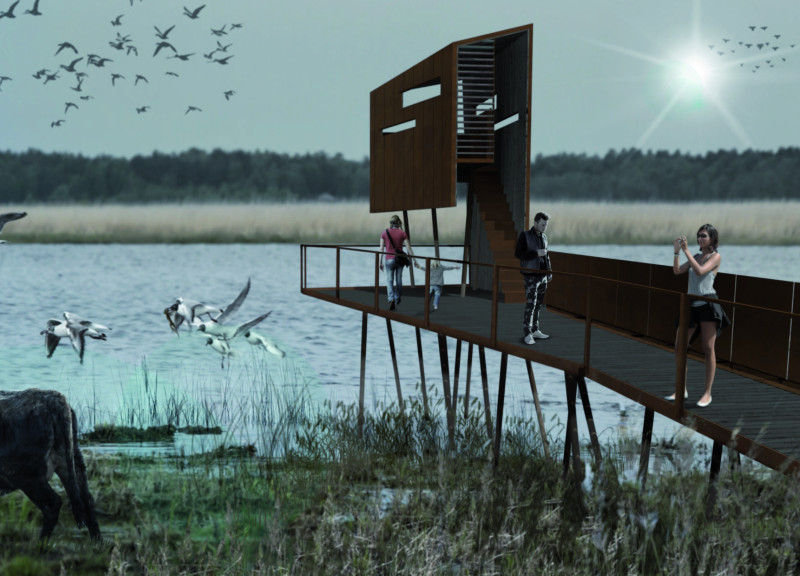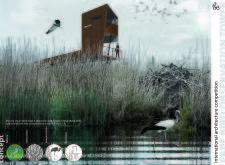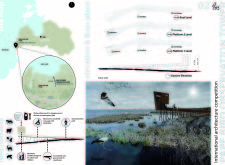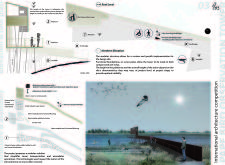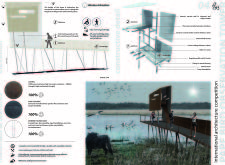5 key facts about this project
### Overview
The Pape Bird Observation Tower is situated within the Pape Nature Park in Latvia and functions as a dedicated point for bird observation. The design intent is to engage visitors with the surrounding natural landscape while facilitating a comprehensive viewing experience of the region's avian life. The structure reflects a combination of contemporary architectural strategies and ecological sensitivity, creating a space that fosters appreciation for the environment.
### Spatial Strategy and Accessibility
The architectural design features a multi-level structure that optimizes visibility for bird watching, with varying platform heights tailored to the site's topography. Distinct observation points enhance the experience by providing diverse vantage options. Accessibility is a key consideration, with footbridges and landfalls ensuring safe transitions between ground level and elevated observation spaces. The inclusion of communal gathering areas promotes interaction among visitors while encouraging a connection to nature.
### Materiality and Sustainability
Material selection is pivotal to the tower’s functionality and aesthetic integration with its surroundings. Corten steel is employed for its durability and ability to weather gracefully over time, while charred wood (Shou Sugi Ban) adds a unique texture and heightened fire resistance. Heat-treated and oiled wood supports flooring and interior finishes, reinforcing a natural ambiance. The design includes steel tubular frames for structural integrity, complemented by screw foundations that minimize site disturbance during installation.
Incorporation of photovoltaic panels enhances the sustainability profile by supplying renewable energy for lighting and safety systems. Additionally, educational panels provide visitors with insights into local ecosystems, enriching their understanding and appreciation of Pape Nature Park’s biodiversity.


